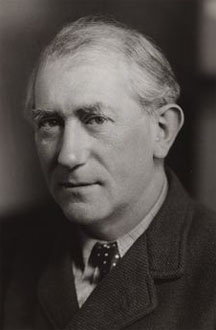There is a close interrelationship between historical/ anthropological documents about Amerindian culture and traditions and Guyanese Amerindian literature. To a large extent, national literature draws on the Amerindian presence and the literature, both written and oral, that it generates. National fiction, poetry and drama are all enriched by this presence which has produced a considerable literary corpus.
Nineteenth century and early twentieth century documents are well complemented by contemporary publications treating indigenous culture, sociology, social anthropology, traditions and politics, which support the literature. The several publications by Professor Emeritus Mary Noel Menezes, Denis Williams, Janette Bulkan and Audrey Butt-Colson provide additional, more up-to-date material as well as new insights into the history. And to this may be added the research output, much of it unpublished, of historians, anthropologists/archaeologists and linguists such as Anna Benjamin, Jenny Wishart and Walter Edwards, who all worked in the Amerindian Research Unit of the University of Guyana. Wishart has returned to the Walter Roth Museum where much of the research and archival findings reside.
The creative literature confronts the same material dealt with by those writers, whose work supports it. Different treatments of the culture, traditions, myths and folk tales may be found in the poetry and drama, as they are in the fiction already discussed.
 A rather controversial English poet, Sir John Squire (1884-1958), produced a poem which has been anthologised and taught in schools in the Caribbean, giving quite a colonial perspective to the region’s indigenous people. “There Was An Indian” by Squire is a pastoral poem about the arrival of Columbus in the West Indies and the first encounter between his world and that of the local people, narrated from the limited point of view of an Amerindian man.
A rather controversial English poet, Sir John Squire (1884-1958), produced a poem which has been anthologised and taught in schools in the Caribbean, giving quite a colonial perspective to the region’s indigenous people. “There Was An Indian” by Squire is a pastoral poem about the arrival of Columbus in the West Indies and the first encounter between his world and that of the local people, narrated from the limited point of view of an Amerindian man.

The most striking features of the poem are its pastoralism and its dramatisation of the limited capacity and simplistic mental reach of the native, “who had known no change”. What helps to save the poem is its reference to “Columbus’ doom-burdened caravels” with its suggestion of the disastrous repercussions of that fateful landing. It is a view of indigenous people resisted by contemporary writers.
Within the Guyanese poetry that they produce are poems which retell many of the legends, narrate the myths or use the folktales as subject matter. Many other poems engage the landscape in different ways. Some of it is description, but represents a significant departure from Sir John Squire. The beginnings of this may be found in the work of Egbert Martin who wrote as ‘Leo’ in the late nineteenth century and is credited as the founder of modern Guyanese poetry. His approach to the interior landscape is one of romanticism, mystique and awe, with several lines about the dark mysteries that lurk within the rivers. It is a beginning of poetry that is Victorian yet Guianese, and engages the habitat of the Amerindians.
Critic/poet Edward Baugh briefly discusses this romantic interest in the Guyanese history with reference to AJ Seymour (West Indian Poetry 1900-1970). And the poem related to that, which comes to mind, is “There Runs A Dream” by Seymour in which history is defined by landscape. Seymour’s poetry contains an epic approach to the heroism in Amerindian tales, myths and legends in which his interest lies. His “The Legend of Kaieteur” relates the imperial deeds of the Great Makonaima and the heroics of Kaie, an old Chief who sacrifices himself for the survival of his tribe by sailing over the Kaieteur Falls. But to prevent his destruction by crashing at the foot of the falls he was transformed into a demi-god who now dwells in his home hidden behind the sheer drop of the waterfall.
This version of the heroic Kaie is in contrast to other versions of the origins of the name Kaieteur given to the falls, which are disappointingly trivial. Seymour would have been more moved by a tale that dignifies the majestic national landform with befitting origins of heroism and the salvation of a people.
The same goes for Amalivaca which similarly tells of a demi-god, heroism and sacrifice, as in the prose version written by Jan Carew. Here is also narrated the origins of landforms, rock formations at Imbaimadai. The romantic approach is also seen in Seymour’s poem on El Dorado, taking another epic look at history. The grandeur with which this poet associates the Amerindian heritage continues in such other poems as “Morning in the Rupununi” and “These Rivers”. The persona in the last named, recalls mythology and folklore, after the fashion of the creation myths to which some of the other works are related.
And yet, Arthur (AJ) Seymour’s most accomplished poem on these subjects is surprisingly, not one of those grand epic works, or the shorter ones of equal glorification of a people and their environment, but the very brief “Shaman”. It is a more modern piece of a mere ten lines on a significant subject in which the poet manages a highly successful integration of form and subject. The likes of Walter Roth showed disapproval of the shaman in Amerindian communities. In contrast to them, Audrey Butt-Colson analyses him as a healer and a theatrical performer, even at times, being amused by his antics. Seymour takes the shaman very seriously as a representation of the people’s ethos, which lends inspiration and integrity to his poem. “Shaman” delves into Amerindian culture at greater depth, with more empathy and completeness than any other Seymour poem. Interestingly the persona who speaks in the short piece dramatises the shaman who becomes the personification of his world and its beliefs which have then possessed the poem.
It does more in ten lines than other works by AJ Seymour do in hundreds and achieve an engagement of landscape similar to other poets who use the environment. Ian McDonald does it in “Essequibo”, as does Mark McWatt. They treat a number of themes indirectly through reference to the environment in poems. Seymour’s “Shaman” comes closest to the verse quality of McWatt whose achievement in expressing his relationship with the interior landscape is exceptional. His treatment runs through Interiors, (1991), The Language of El Dorado (1994) and The Journey to Le Repentir (2010).
A deceptively simple poem is McWatt’s “Kanaima – Tiger” from the latest collection. It fictionalises a recollection from experience when McWatt was growing up in the North West District of Guyana and saw a black jaguar in the road.
He half describes it as an encounter with kanaima who was on the hunt for someone. This belief in the protean human practitioner skilled as a hunter and an assassin who can change shape to be a part of the forest or to be a tiger (jaguar) is important to the Amerindians. McWatt discusses it very casually in the poem, maintaining a convincing balance between belief and ‘rational thought’. But the poem’s depth is hidden behind a very subtle personification of the tiger who could “think” as he examined the boys in the road. In addition, they never saw when he walked out of the bush, he just suddenly “appeared” before them as if by some magic. If we follow the narrative in the poem, even this can be explained by saying he did walk out of the bush, but the narrator was just not looking and did not notice.
Last of all, is McWatt’s final statement in the poem about the tiger who the boy was convinced, did in fact “think” as he took a good look at the boys, “found us wanting” and calmly went on its way.
The kanaima’s attitude is then disdainful, as if he has no interest in the boys; he is superior to their superficial ‘discussion’ about whether he was tiger or kanaima, their ignorance of the whole thing, merely informed by what one boy’s father “said” as against the more intelligent correction of the narrator’s father who explained it was not kanaima, but a dangerous creature from whom they needed protection that was hurriedly arranged. The narrator further goes on to say that when he grew older and wiser he “learnt to say jaguar”, not “tiger”, since no tigers live in Guyana. But the kanaima is above all of this, found it “wanting” and moved on.
It is very much the kind of achievement attempted by dramatist and poet Michael Gilkes in the play Couvade, which patterns itself after an Amerindian tradition called couvade. Gilkes calls upon a birth ritual and involves a shaman dramatically in a play about racial dimensions in multi-ethnic Guyana.
Of the poets, McWatt’s interest in this habitat is the most profound engagement with the Amerindian ethos, which he mostly approaches through poems of the environment. He takes Guyanese literature into this deep and unfathomable world.








